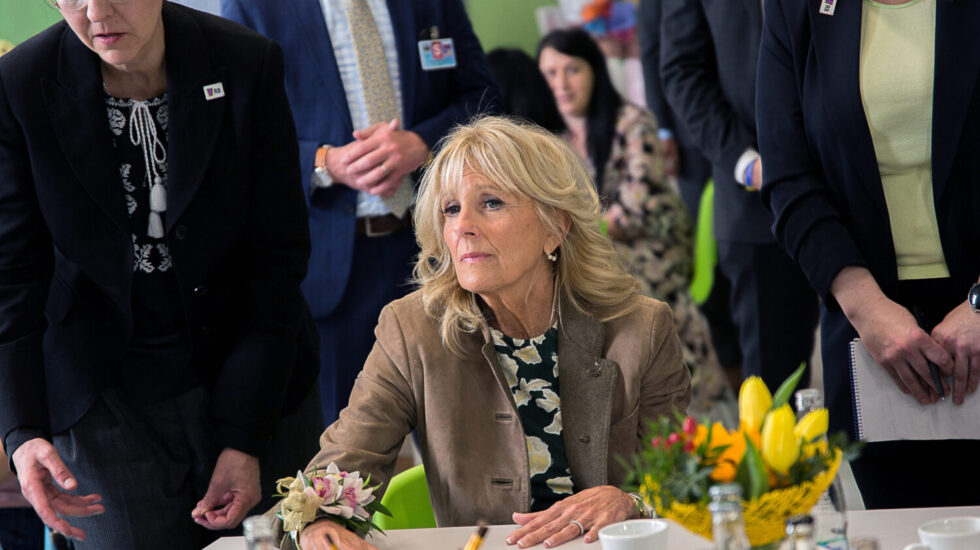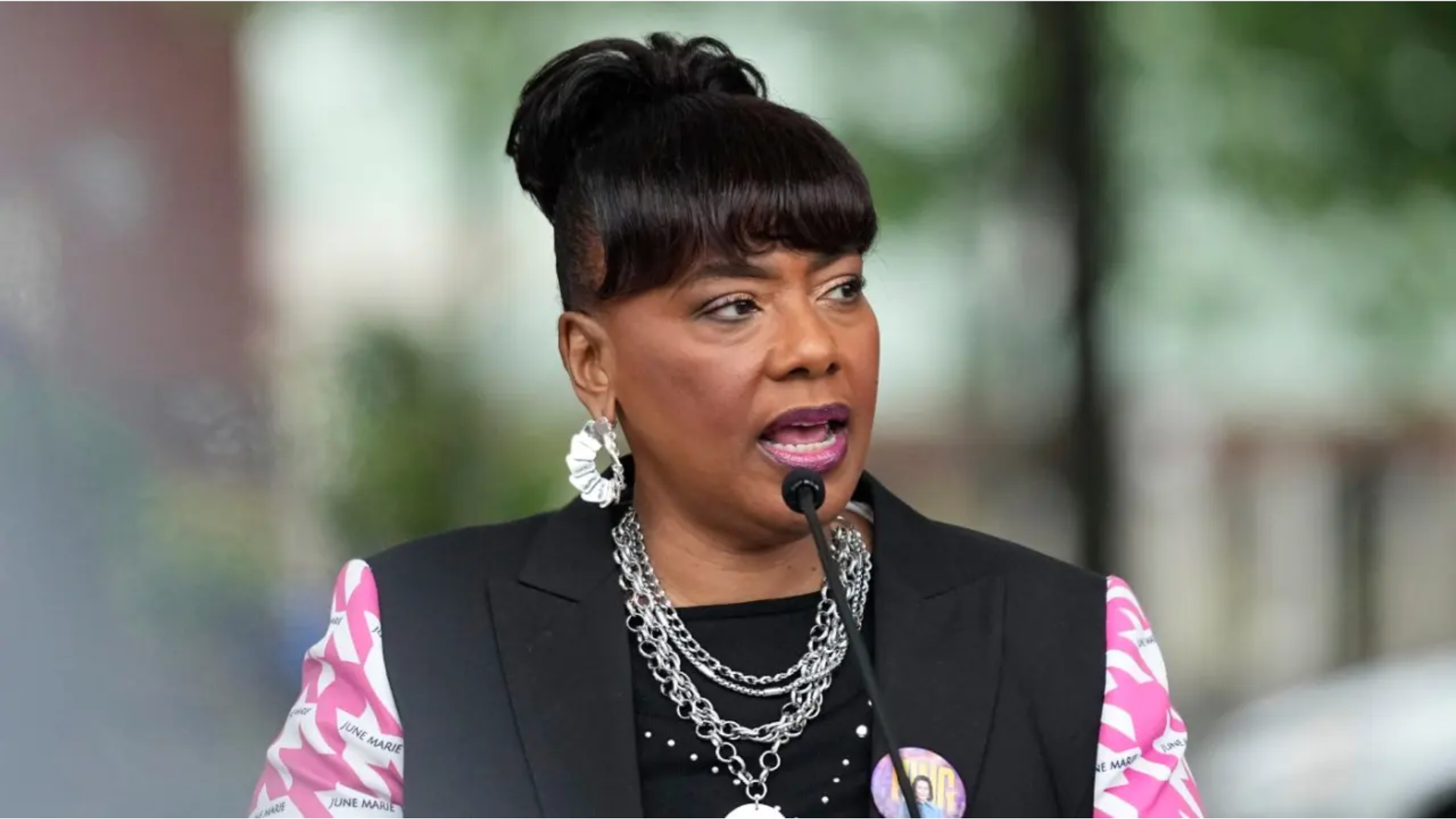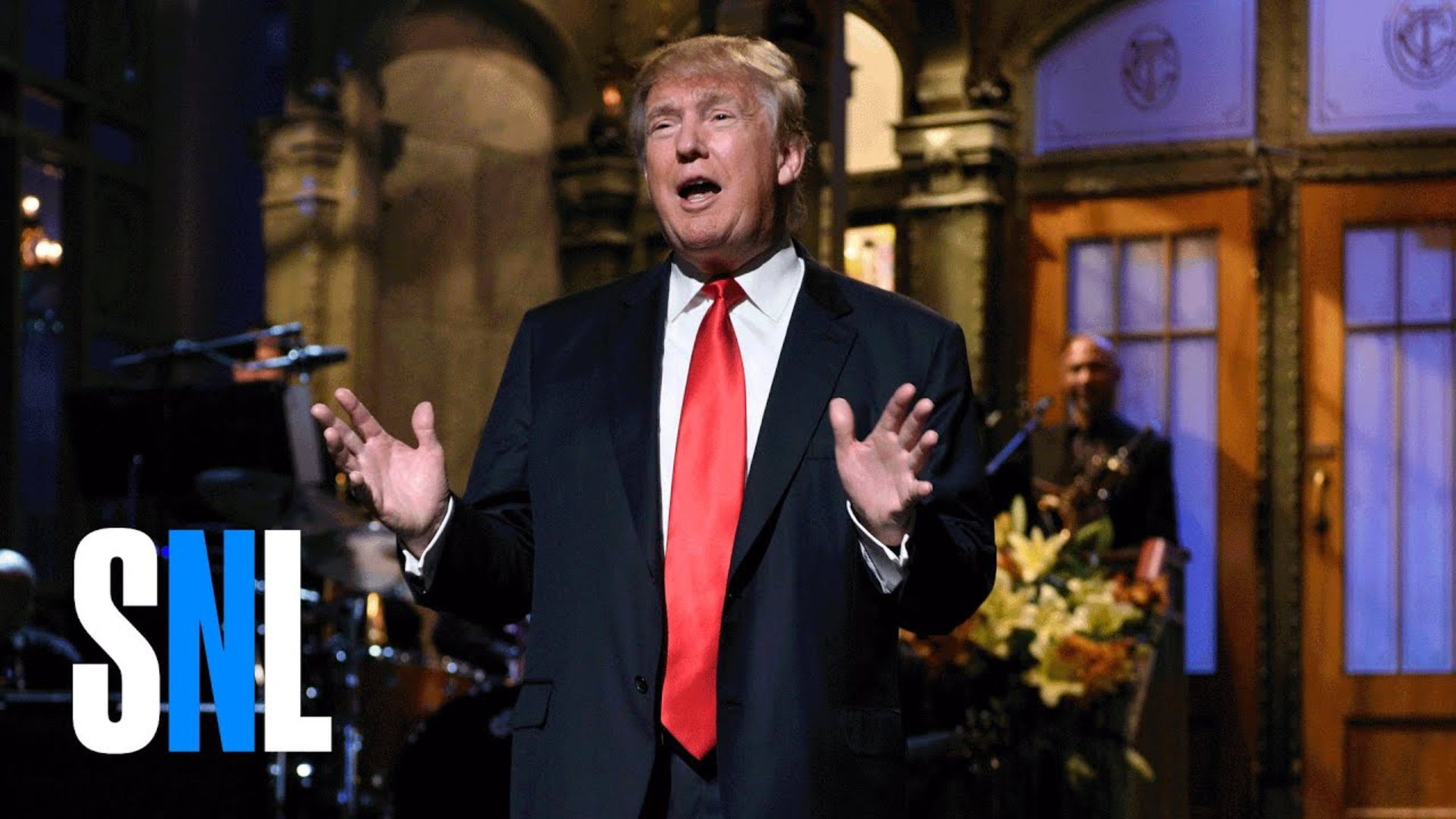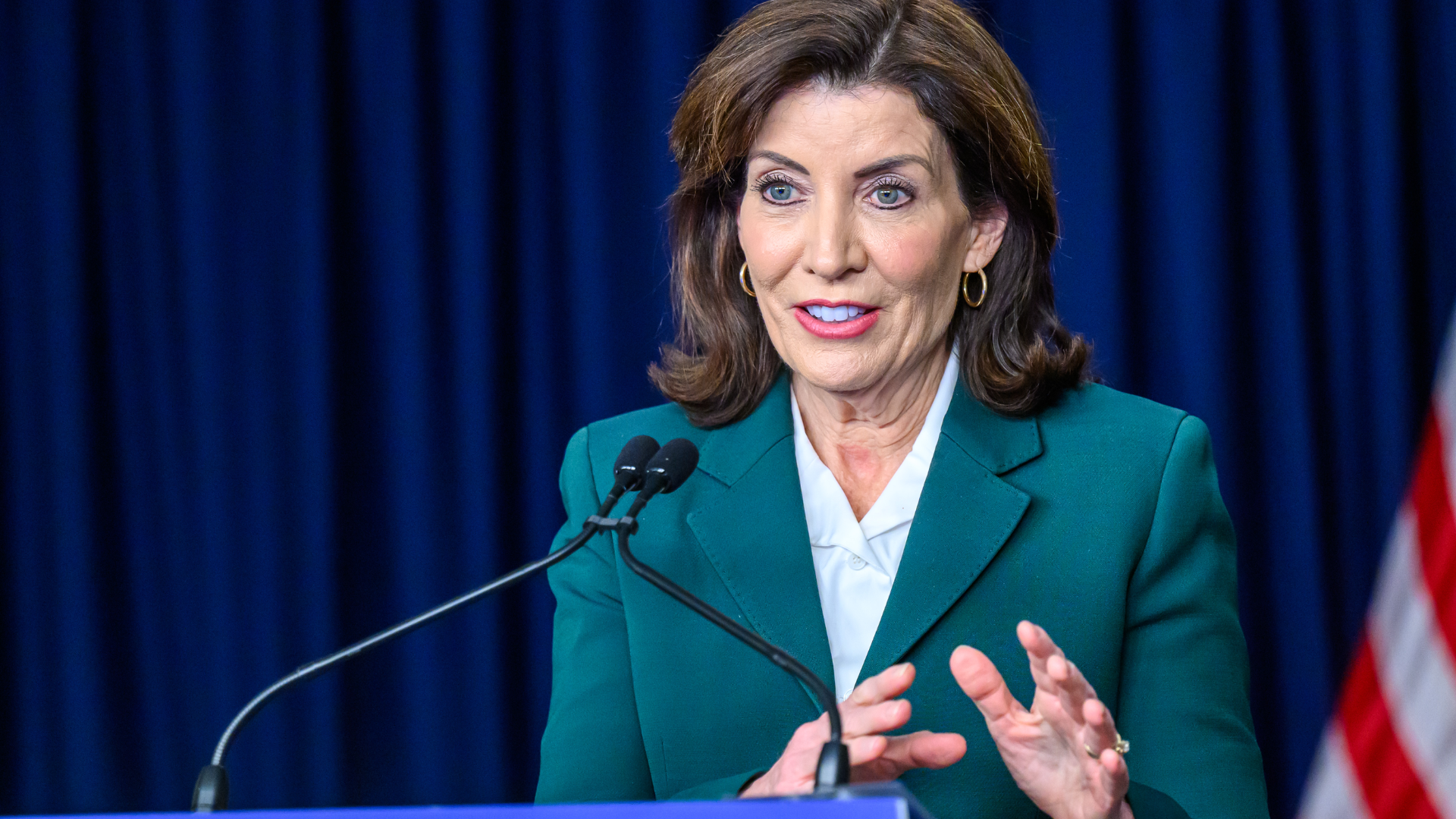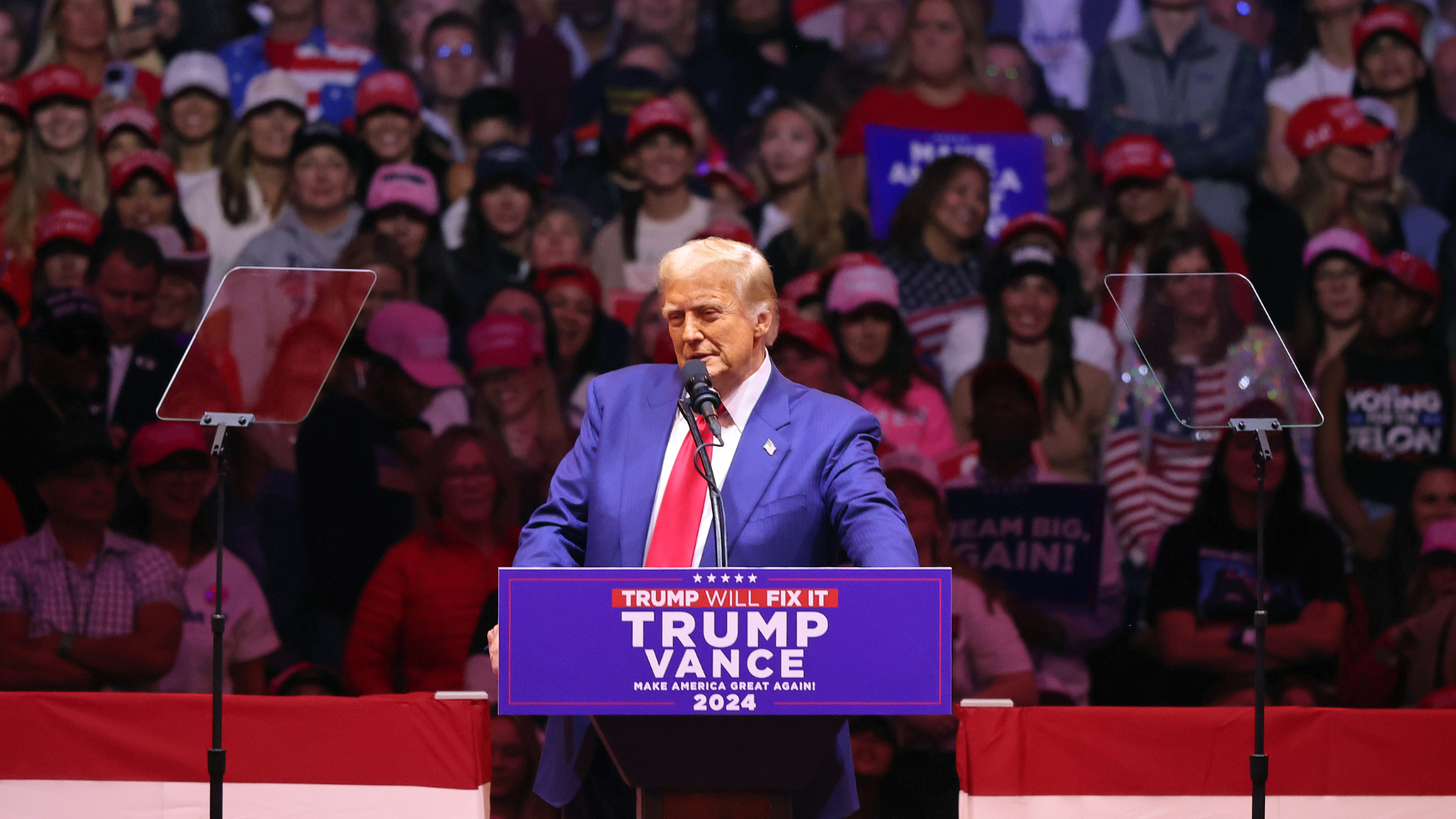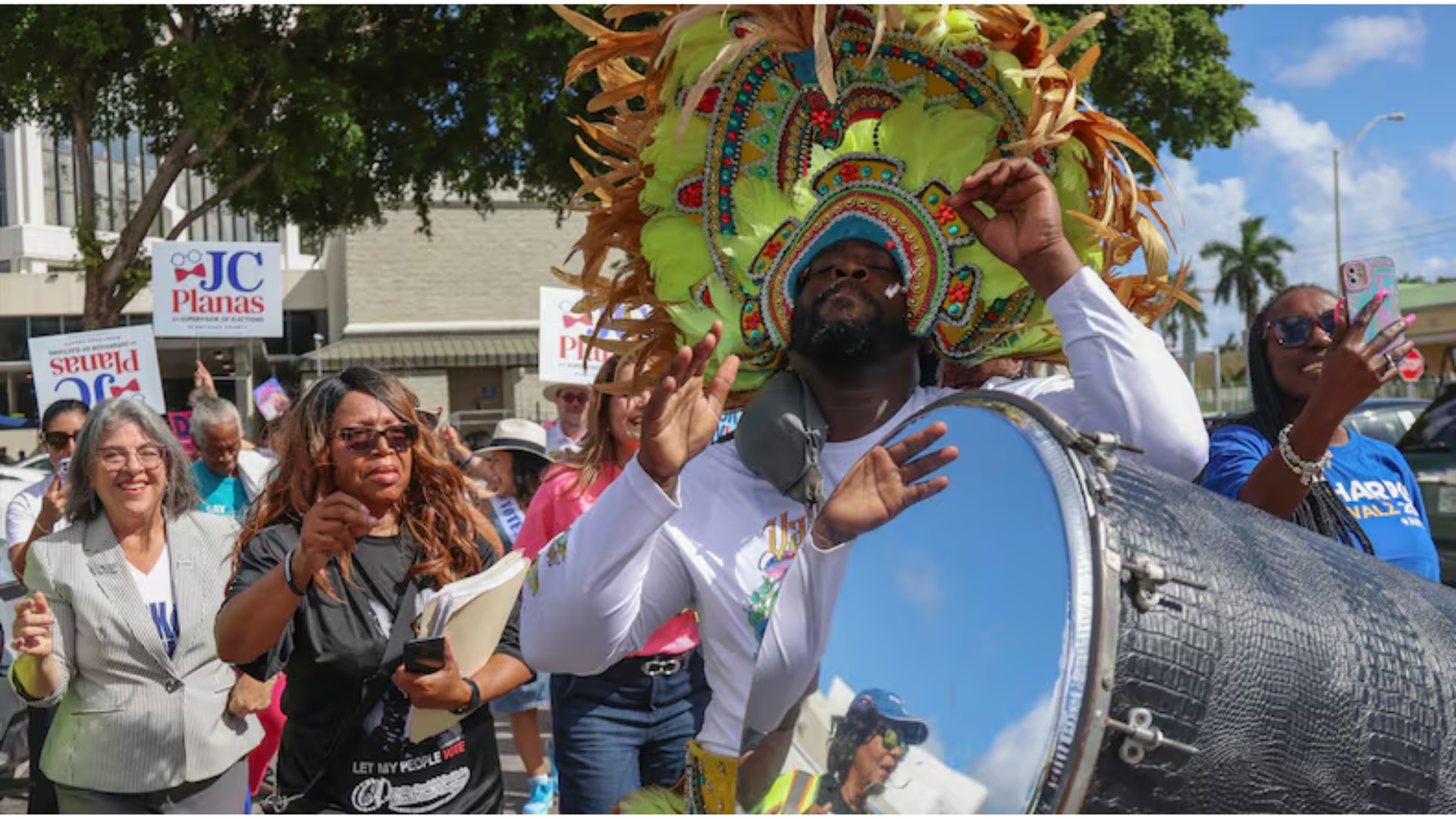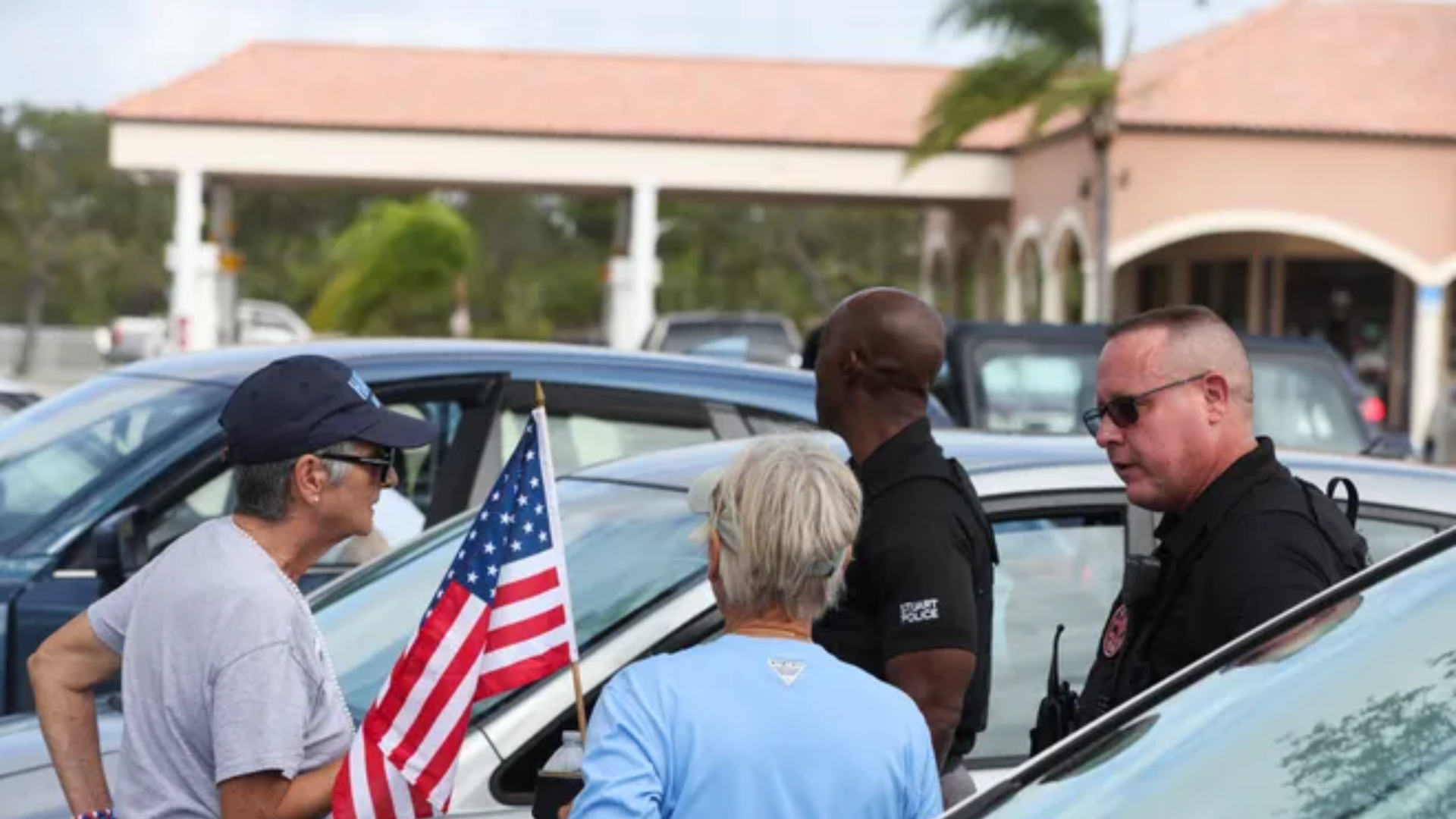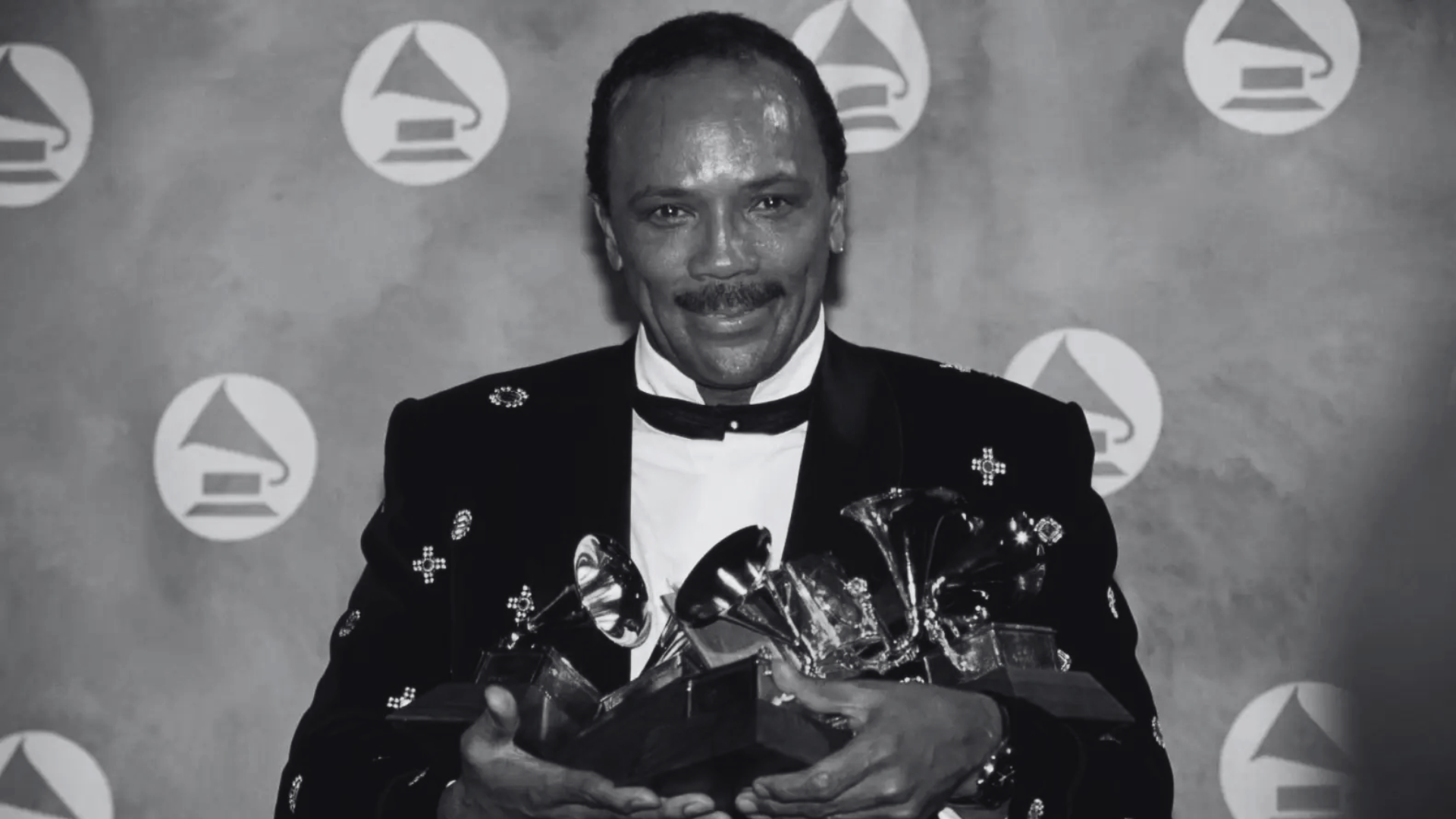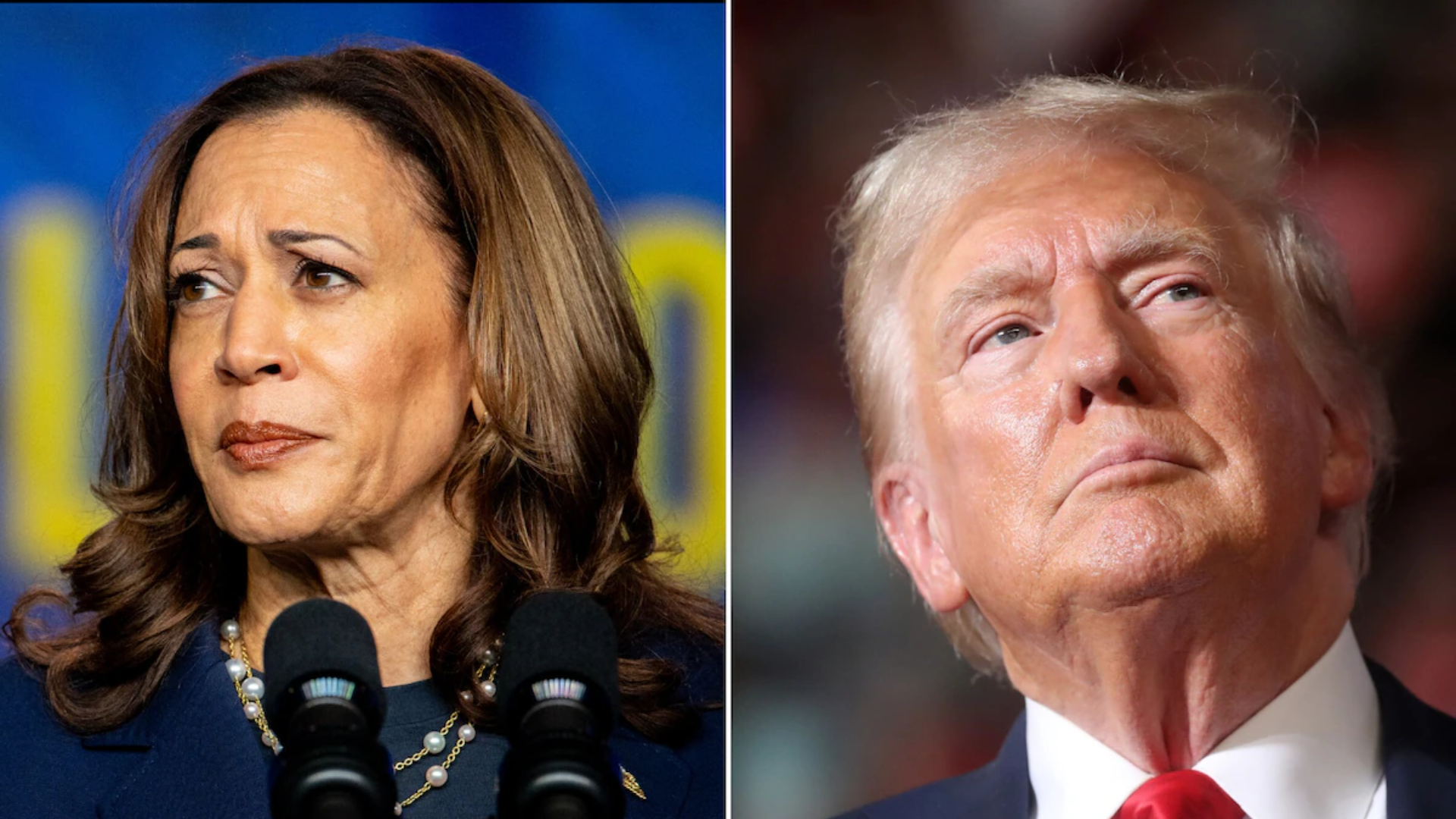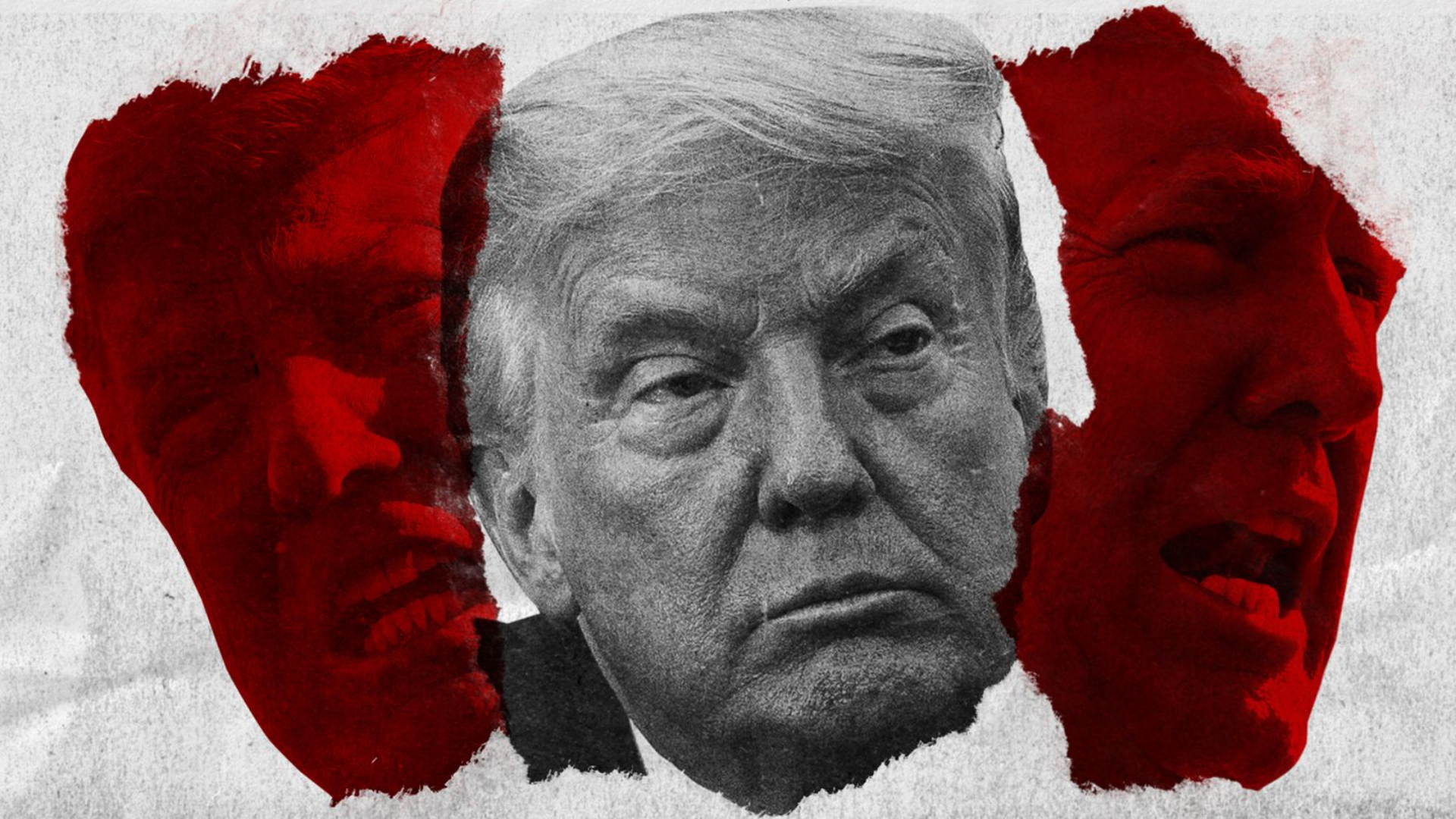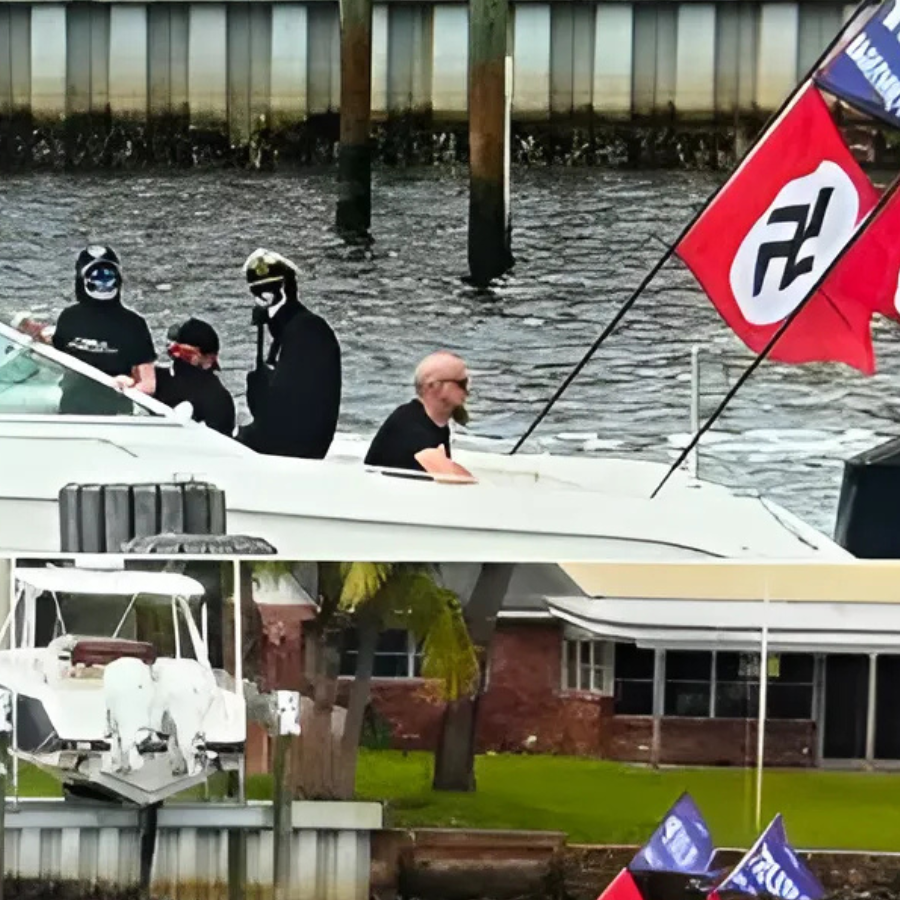
During a recent boat parade in Jupiter, Florida, a boat displaying swastika symbols alongside flags supporting Donald Trump attempted to join the event, sparking significant controversy.
The incident took place in Palm Beach County, near former President Trump’s residence, and quickly gained attention both at the scene and online.
Lesley Abravnel, a social media user and supporter of Kamala Harris, posted images of the boat on the platform X (formerly Twitter), expressing outrage at the display. Her post, which has been viewed over 1.1 million times, included pictures of five individuals on the boat.
Abravnel remarked, “Near Palm Beach right now. All Nazis are Trump voters. Sickening.” The photos showed men, some wearing face coverings, and one holding an image of Mike Lindell, a known Trump supporter and CEO of MyPillow.
Abravnel’s post drew a strong reaction, with various groups and individuals weighing in. StopAntisemitism, an advocacy group, identified one of the individuals on the boat as Jon Minadeo II, a figure known for his neo-Nazi activities and affiliation with the Goyim Defense League (GDL), a group classified as a hate group by the Southern Poverty Law Center.
Minadeo has previously been arrested in Poland for distributing far-right propaganda at the Auschwitz memorial site.
The boat displaying swastika flags drew criticism not only for its symbols but also for its associations with known hate groups.
While Newsweek reached out to several parties, including the GDL and local authorities, to confirm the identities of the individuals involved, they were unable to verify at the time if the participants were indeed affiliated with GDL members.
Another user on X, who identifies as a Trump supporter and attended the parade, claimed that the people on the swastika-bearing boat were not genuine Trump supporters but “antifa imposters” aiming to disrupt the event.
The user shared a video showing other boats using their engines to spray water at the controversial boat, apparently in an effort to distance themselves from it. The individuals on the swastika boat could be heard shouting phrases such as “Heil Trump,” linking Nazi slogans with support for Trump.
The incident led to various interpretations, with some arguing it was an attempt to undermine Trump supporters, while others saw it as an alarming display of far-right extremism.
This confusion reflects the heightened polarization surrounding the upcoming election, with accusations and counter-accusations flying between different political factions.
Mary L. Trump, the former president’s niece and a vocal critic, also reacted to the images, reposting them with a critical comment questioning the state of the political climate.

Her comment, along with the widespread reactions online, illustrates the deep divisions that persist within American society.
The incident has prompted debates about the nature of political extremism and the tactics used to express or oppose it.
The presence of controversial symbols like the swastika at a public event has heightened awareness and concern about hate groups in America. As these images continue to circulate online, they reinforce the need for vigilance and accountability within political movements.
The appearance of swastika flags at a Trump-related event underscores the complexities of political discourse in today’s environment, where symbolism and affiliations are hotly contested and often polarizing.
With less than a month until the presidential election, incidents like these highlight the volatile nature of current political rallies and their potential impact on public opinion.
